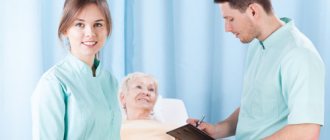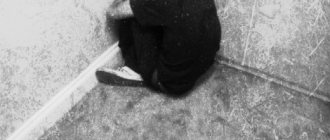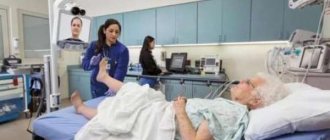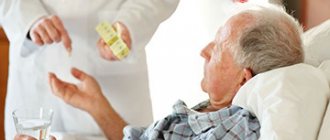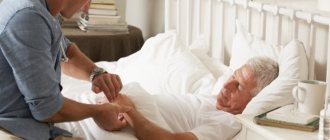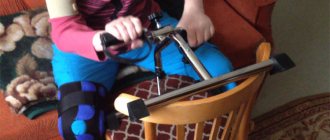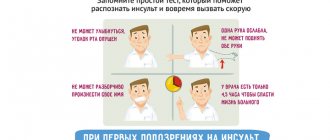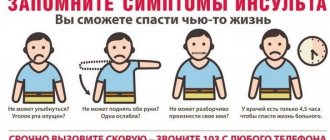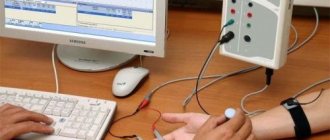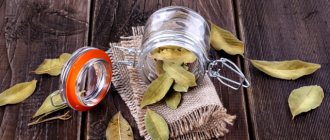Ischemic stroke (IS) is a disease of the central nervous system that occurs when there is difficulty or complete cessation of cerebral circulation (blood stops flowing to any part of the brain). Neurological symptoms appear within minutes of a stroke and may worsen over several days. Depending on the duration of the disorder, which part of the brain is affected, as well as a number of other factors, the patient can either fully recover or become disabled, and AI can also lead to death.
Signs of a stroke are weakness in the limbs of one half of the body, impaired orientation and coordination of movements, swallowing disorders, visual disturbances, speech disturbances, dizziness, headache, nausea, and disturbances of consciousness. In any of these situations, you must immediately call an ambulance.
Factors driving AI development
At risk are people with hypertension, diabetes mellitus, atherosclerosis of the central arteries, arrhythmia, heart defects, blood diseases, excess weight, and coronary heart disease. A combination of several factors increases the risk.
The development of ischemic stroke is promoted by stress, psycho-emotional stress, alcohol abuse, and overeating.
Disorders developing after IS
- Motor, as a rule, on one side of the body: paresis (decreased strength) of the limbs up to plegia (complete lack of movement), convulsions, sensory disturbances. Patients often lose the opportunity to care for themselves and lead their usual lifestyle.
- Visual: complete or partial loss of vision, double vision.
- Body Sensitivity Disorders: Sensitivity to high or low temperatures.
- Mental disorders: depression, euphoria, causeless frequent mood swings, irritability, hallucinations, etc.
- Speech: minor defect (the patient cannot pronounce any sounds, pronounces words incorrectly), complete loss of communication skills, including the inability to understand the speech of other people, read and write.
- Memory impairment: partial or complete memory loss, loss of the ability to remember new information.
- Behavioral: difficulties performing simple everyday activities.
Rehabilitation after ischemic stroke
The main goal of rehabilitation is to restore lost body functions, restore the patient’s ability to care for himself, and help him physically and psychologically adapt to a new state of health.
The success of rehabilitation depends on many factors, including:
- Early start. It is important to promptly provide first aid and begin rehabilitation. This reduces the likelihood of developing dangerous and irreversible disorders. Rehabilitation measures should begin from the first day, when the patient is still in the intensive care unit.
- Regularity of rehabilitation procedures. A number of procedures are carried out during the recovery period, and some will have to be done regularly throughout the rest of your life.
- Complexity. The recovery program should consist of a number of techniques that complement each other.
- Comprehensive approach. When drawing up a recovery program, it is important to take into account not only the consequences of a stroke, but also the person’s age, his general health, the presence of concomitant diseases, etc., since the body is an integral system.
Rehabilitation methods depending on the stage
The most acute stage
The stage lasts from the onset of the disease (the moment of hospitalization) to three days. The task of doctors is to save the patient’s life and restore cerebral circulation in order to reduce possible negative consequences to a minimum. To prevent the development of motor disorders, passive exercise therapy is carried out, and constant intermittent pneumocompression is carried out to prevent thrombus formation in the lower extremities. If swallowing is impaired, an aphasiologist begins to work with the patient.
Acute stage
The period lasts up to 2-3 weeks and begins after the patient is transferred from intensive care to the department.
Basic therapy consists of medications that reduce swelling of brain tissue, normalize blood pressure, and restore the functioning of the cardiovascular system.
The following rehabilitation methods are used:
- Exercise therapy: both passive and active-passive exercises are carried out aimed at restoring motor functions;
- work with specialized specialists: depending on the consequences of the vascular accident, this may be a speech therapist, an ophthalmologist or other specialists. A psychotherapist works both with mental disorders and helps the patient fight depression.
Subacute and early recovery stage
The period lasts from 3 weeks to 6 months. The patient’s life is no longer in danger, some of the functions lost by the body have been restored, the condition has returned to normal, and the doctor can assess what health problems will need to be addressed further. The rehabilitation program usually includes:
- Exercise therapy, mechanotherapy, exercises on simulators with biofeedback: they help avoid bedsores, congestive pneumonia, muscle atrophy, have a positive effect on blood circulation, metabolism, develop muscles, help normalize the functioning of internal organs;
- physiotherapy: electrophoresis, reflexology, electrical stimulation and other techniques relieve pain and help restore the functioning of affected tissues and organs;
- massage: the procedure improves blood circulation, metabolism, increases muscle tone, fights movement disorders, pain;
- classes with specialists: a speech therapist-aphasiologist helps restore speech, a psychotherapist teaches how to fight depression, neuropsychological classes restore lost higher cortical functions (memory, attention, vision);
- diet: fried, fatty, flour and spicy foods are contraindicated, and vegetables and fruits must be included in the diet.
Late recovery stage
The period lasts from 6 months to one year. Treatment in the hospital ends, but the patient continues to study at home. The program usually includes a diet, exercise therapy, and a number of physiotherapeutic procedures and classes with specialists are carried out during the course. If necessary, the doctor prescribes occupational therapy and art therapy.
Stage of consequences and long-term consequences
The patient must monitor his health and follow the doctor’s recommendations for the rest of his life, and he must also visit a specialist approximately every six months.
Technique
The first massage sessions should be local and not exceed 10 minutes.
Important: Alena Zernovitskaya, a famous blogger, shared her AUTHOR'S recipe for a youthful face mask, which she has been using for more than 5 years! Read in full
If there are no contraindications and the procedure is well tolerated by the patient, the massage time is gradually increased to 30, and then to 45 minutes . Accordingly, the area of influence should expand.
Preparation for the procedure:
- The patient must ensure a position in which there will be an outflow of blood from the center to the periphery, that is, from the brain to the heart. To do this, you can place a pillow under your head and shoulders or raise the top of the massage table at an angle of 30 degrees.
- Place a cushion under your knees while lying on your back, and place the affected arm at a right angle to the body on a pillow.
- When lying on the stomach, the patient's head should be turned towards the massage therapist.
- For heart failure, the patient is placed on his side.
- The room must be ventilated before the procedure.
- Massage should be done an hour after eating and under no circumstances on an empty stomach.
General massage technique
General massage, as a rule, is prescribed in the deep rehabilitation period - at least a month after a stroke.
Attention! All massage movements after a stroke should be carried out towards the lymph nodes, that is, from the center to the periphery.
After a stroke, several treatment techniques are used, successively changing each other.
When stroking, the palms glide over the surface. At first it’s very easy, then more intense. Movements can be carried out in a spiral or zigzag. With this effect, dead epithelium is removed and blood supply to the upper layer of skin is improved.
When rubbing, a deeper effect occurs due to the displacement of tissue layers relative to each other. This relieves swelling and improves lymph movement. This technique uses straight or wave-like movements using the pads of the fingers or the base of the palms.
Kneading is otherwise called passive gymnastics. With this type of impact, the muscles are alternately pulled and kneaded. At the same time, muscle tone increases and tissue metabolism increases. A contraindication to kneading after a stroke is the presence of spastic phenomena.
When vibrating, the massage therapist, with a relaxed hand, transmits vibrating movements from right to left over various parts of the patient’s body. At a high frequency of vibration, a relaxing effect occurs, and at a low frequency, a tonic effect occurs.
Attention! Percussive massage techniques immediately after a stroke are strictly prohibited!
Sequence of general massage:
- First, the sore leg is massaged from the front in a direction from top to bottom - starting from the hip, ending with the foot, consistently performing all types of permitted influences.
- Then the pectoralis major muscle is treated on the same side.
- Move to the hand from the same side. Massage in the following sequence: palm, wrist, forearm, shoulder.
- Change the patient's position and work on the back of the affected leg.
- Then massage the collar area.
Attention! Massage of the collar area during the rehabilitation period after a stroke should only be done by a professional!
- Then you definitely need to massage the leg and arm on the healthy side in the same sequence.
- Lastly, massage your back.
After the procedure, you need to cover the patient with a warm blanket and give him the time he needs to rest.
Foot massage
Foot massage after a stroke is prescribed as soon as the patient’s condition allows it.
To massage the front of the leg, the patient should be placed on his healthy side , and to massage the back of the leg, the patient should be placed on his stomach.
Sequence of foot massage:
- Begin the massage from the knee, performing the techniques described above sequentially.
- Then they move to the front of the thigh. Careful movements lead from the bottom up to the groin area.
- Then they begin to massage the buttocks, starting from the sacrum and ending with the groin area.
- After the buttocks, move on to the lower leg. Massage in this area is carried out with more intense movements. First, the front surface is treated with the patient lying on his side, and then the back surface, when the patient lies on his stomach. When lying on your stomach, your head should be turned towards the massage therapist.
- The foot is massaged with the patient in the supine position. The movements lead from the heel to the toes. Then they work on the outer part of the foot, starting from the ankle.
- Lastly, massage the toes - from the base to the nail with rubbing movements.
After massaging the affected leg, it is necessary to massage the healthy leg in the same way to ensure that symmetrical signals are received in both hemispheres of the brain.
Hand massage after a stroke
Hand massage, similar to foot massage, also begins as early as possible . During the procedure, the patient must lie on his back.
Sequence of hand massage:
- First, massage the pectoralis major muscle on the affected side. All movements should be as gentle as possible and go from the center of the chest to the armpit. During the first sessions, you can limit yourself to stroking and rubbing. Then it will be possible to add other permitted types of influence.
- After the pectoral muscle they move to the shoulder. The deltoid and trapezius muscles are carefully worked with calm, but deep and persistent movements.
- Then comes the turn of the triceps. They work on it starting from the elbow to the armpit.
- The biceps are massaged starting from the elbow to the shoulder.
- After the biceps, massage the forearm from the wrist to the elbow.
- Hands are given special attention. The fact is that the activity of the whole organism is connected with the nerve endings of this part of the body. Therefore, the hand is massaged very carefully, paying special attention to the palm and the back of the fingers.
After massaging the sore arm, you need to carry out the same procedure with the healthy one. And after the entire hand massage session, the patient must be transferred to a sitting position for fifteen minutes , covered warmly with a blanket.
Face massage
It is advisable to start performing facial massage two weeks after a stroke, but only with the permission of a neurologist.
Read our material about the indications and contraindications for acupuncture.
Our article will tell you about the features and techniques of general classical massage.
Reviews from doctors about the unique gua sha massage can be found at the link: https://kosmetsovet.com/telo/protseduryi-dlya-tela/massazh/massazh-guasha.html
Unlike limb massage , work is done on the face only on the injured side. The healthy side of the face is connected to the massage only after the restoration of previous facial expressions and articulation begins.
It is good if the patient himself masters the techniques of this procedure and begins to perform it first with his healthy hand, and then, as rehabilitation progresses, using the damaged one. The number of movements and duration of the massage are recommended only by the attending physician .
Sequence of facial massage:
- This procedure begins with a light vibration massage of the head, paying special attention to the back of the head.
- Then they place a palm on the forehead and make several sharp movements from bottom to top.
- After this, iron and lightly rub the entire surface of the head.
- Then they again place their palm on the damaged part of the forehead and, as it were, toss the muscle several times.
- Repeat the previous movement using the phalanges of the middle and ring fingers.
- Using the edge of the palm, make sawing movements from the middle of the forehead to the temple.
- Place your healthy palm on the affected part of the forehead and begin to “breathe” with the muscle, directing all your attention to this area.
- Then they take a ball (any one you can buy, about 10 cm in diameter) and massage your forehead with it, first from the eyebrow up, then down.
- After the massage with the ball, lightly tap the forehead and the entire surface of the head with a wooden spoon.
- Massage in the mouth area is carried out with a ball, simulating smoothing out wrinkles around the lips and the lips themselves using circular movements.
- After massaging with the ball, the skin around the mouth is massaged with fingertips using pressing movements.
- Cheek massage is carried out using standard techniques, being careful in the direction of lymph flow.
Attention! When restoring facial expressions after a stroke, massage must be combined with facial gymnastics.
Rehabilitation in
The Blagopoluchie Ischemic Stroke Rehabilitation Center is equipped with all the necessary equipment for the successful full recovery of patients. Qualified staff selects individual rehabilitation programs, monitors the dynamics of patients’ health, and monitors their condition around the clock. We are located near Moscow and are ready to host residents of both the capital and other regions.
Prices for our services depend on the required procedures. You can clarify them in our center after consultation.
Thigh massage
The thigh begins to be massaged from the front and inner surface from the knee upward. All stages of the procedure are followed, starting with stroking, then moving on to rubbing and vibration. Each technique is repeated several times.
After exposure to the front and inner surfaces of the thigh, the patient is turned over, thereby making it possible to massage the back of the leg. The intensity of the procedure is low, since the extensor muscles are often in spasm. The session is limited to stroking, which is performed from the popliteal fossa to the lower back.

